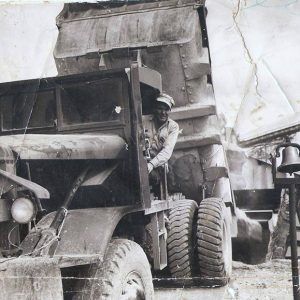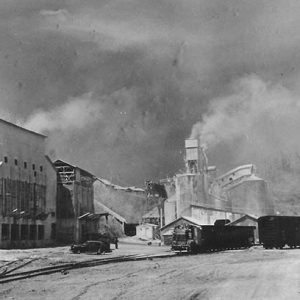calsfoundation@cals.org
Limedale (Independence County)
Limedale is located on Limedale Road just before it connects to the north with Highway 69 (a.k.a. North Central Avenue). Limedale is approximately five miles northwest of Batesville, the county seat for Independence County, and about six miles southeast of Cushman (Independence County). Limedale is near Dry Run Creek (a.k.a. Spring Creek).
Though the land around Cushman and Bethesda (Independence County) was noted for its white limestone rocks, the first mining company of importance to exploit this resource was located at Denieville (Independence County), which today is a ghost town. Denieville was named for the Denie Lime Company and was located on Spring Creek on what is today Limedale Road.
The Arkansas Lime Company began in Ruddells (Izard County) in 1906 as the Young Lime Company by Edgar Young, who had been in the employ of the Denieville lime plant on the Cushman branch of the railroad. The father-and-son team of George and Junius Case took control of the company in 1907, incorporating the company as the Arkansas Lime Company in 1910. The company relocated to its present site of Limedale in 1924 on the recommendation of mining engineer George Weigart, and the name was changed to Batesville White Lime Company; their product was known as polar bear lime. During 1930s, the company came under the control of stockholders outside the region. It became part of the Rangaire Corporation of Texas in 1962, merging with two other local lime companies. In 2002, the company became a subsidiary of the United States Lime and Materials of Dallas, Texas, at which time it became the Arkansas Lime Company.
The lime quarry is approximately two miles west of Limedale and employs about fifty. In the early days of the Limedale quarry, men broke boulders into smaller rocks to load in a small rail car (about three to four tons). For this, the pay was thirty cents a day per man. There were three kilns, with three more added around 1930. In full production, the company used fifty cords of wood per day. A truck was kept busy hauling wood from the yard to the kiln. The company bought and leased thousands of acres of woodland and contracted with local suppliers. John Lytle and George Young were principal suppliers.
In 1928, the company built employee housing at Limedale and at the quarry. The first house in Limedale was built for company supervisor R. C. Russell Stice during the move from Ruddells to Limedale. Eighteen employee houses were built at three different locations at the plant in Limedale, and about that many at the quarry. The company store was at the quarry. The workers often owed the store as much as their total income from laboring in the mines. The first store for the lime company was owned by John Allen Linville. He and his wife, Nellie Osborne Linville, sold their store to Gene Matthews, who moved the store to Bethesda, where it still is located.
A school called Redcut was provided for the children of the workers. Redcut consolidated with the Cushman School District in 1948. There was never a post office at Limedale. Mail came through Batesville and Cushman.
A community building was built in the early 1930s by a lime company stockholder, James Stanley Handford, who felt the employees and their families needed a meeting place. The building served as church, movie house, union hall, and a place for quilting bees and entertainment where such musicians as Slim Rhodes, the Louvin Brothers, and Ernest Tubb performed. Colonel Ed Baxter, a plant manager, organized a Limedale baseball team which became one of the best in the county. One pitcher, Lucian Woodson, was drafted by the St. Louis Cardinals.
Labor unrest during the Great Depression brought on the Batesville White Lime Strike of 1939, when about eighty workers struck for the abolition of the piece work payment basis in favor of an hourly wage plan. After two months, the striking workers settled for a pay raise instead.
From its beginnings in Ruddells, the Arkansas Lime Company used trains to haul the rocks. At first, steam engines were used, then they were replaced with diesels. One of the old Limedale stream trains is on display in the city park by Lock and Dam No. 1 on White River in Batesville. The company operated two and a half miles of three-foot-gauge railroad on a spur that connects to the Union Pacific and Kansas City Southern railroads in Batesville; it did not convert to standard gauge until October 2000.
For additional information:
Arkansas Lime Company Collection. Regional Studies Center. Mabee-Simpson Library. Lyon College, Batesville, Arkansas.
Fair, James R., Jr. “The Batesville White Lime Company.” Independence County Chronicle 16 (January 1975): 2–14.
McGinnis, A. C. “A History of Independence County, Ark.” Special issue. Independence County Chronicle 17 (April 1976).
Kenneth Rorie
Van Buren, Arkansas
 Olen Burrow
Olen Burrow  Independence County Map
Independence County Map  Limedale Plant Strike
Limedale Plant Strike  Limedale Lime Plant
Limedale Lime Plant 




Comments
No comments on this entry yet.